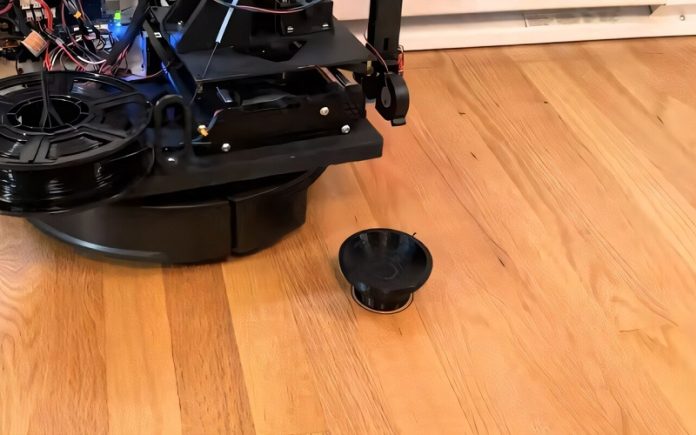
Researchers from the University of Washington have developed MobiPrint, a smart, mobile 3D printer that can create objects directly onto floors.
Unlike traditional 3D printers that are fixed in one place, MobiPrint can move around and automatically measure a room before printing.
The goal is to make 3D printing more flexible and accessible, allowing people to add custom elements to their homes with ease.
MobiPrint is designed to make adding new features or objects to a room simpler.
For example, if someone wants to add a footrest under a desk or print tactile markers for accessibility, MobiPrint can do it on-site without needing to measure and print separately.
The device uses LiDAR, a technology that scans and maps indoor spaces.
This information is turned into an interactive canvas on the team’s design tool, where users can choose or upload models and select where to print them.
The prototype was presented at the ACM Symposium on User Interface Software and Technology (UIST 2024) in Pittsburgh. Built on a modified consumer vacuum robot, MobiPrint offers users a range of options.
It can print small custom objects up to three inches tall, such as decorations, bowls, or practical items like accessibility markers.
These markers could include warnings for staircases or text directions for blind or low-vision individuals.
Daniel Campos Zamora, a doctoral student involved in the project, explains that 3D printing technology is already quite advanced.
Now, the challenge is to push it further by making it more adaptable and easier for people to use. MobiPrint could be used to create customized spaces that fit specific needs, whether for accessibility or personal preferences.
MobiPrint currently uses PLA, a common bioplastic in 3D printing. The researchers are working on ways to remove and recycle printed objects and hope to explore printing on other surfaces like walls and even outdoors.
They’re also interested in trying different materials like concrete.
The potential applications for MobiPrint are vast. Jon E. Froehlich, a professor in the Allen School, imagines a future where a robot like MobiPrint could be sent to fix sidewalk curbs, making life easier for wheelchair users or children on bikes. This flexibility shows how reconfigurable environments can be with the help of mobile 3D printing technology.
By making 3D printing more adaptable and user-friendly, MobiPrint opens up new possibilities for custom home improvements, accessibility features, and even outdoor modifications. The project offers a glimpse into the future of personalized and on-demand 3D printing.



